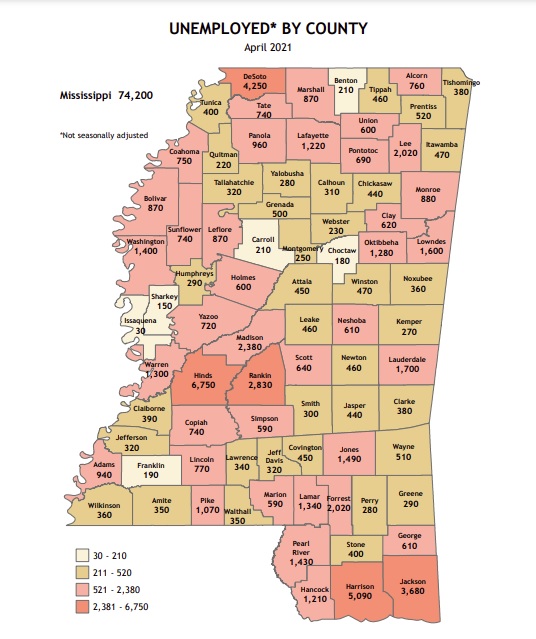Local businesses having a hard time finding employees is a very real issue in Oxford.
Economic development experts say there isn’t just one cause of the high demand for workers and finding a solution isn’t going to be easy.
Jon Maynard is CEO and president of the Oxford-Lafayette Chamber of Commerce and Economic Development Foundation. He said Lafayette County isn’t facing this issue alone.
“I’ve talked with many of the Chambers of Commerce in the SEC — Baton Rouge, Gainesville, Starkville, Athens — and they have the same exact problem. They’re all struggling to figure out how to fix it,” Maynard said. “A lot of communities are posting job boards, having job fairs. They’re doing all the things that they know to do. But this isn’t something we’ve ever seen before.”
Before the COVID-19 pandemic, Lafayette County’s unemployment was at 4.9 percent for the month of March last year, which was right around the average annual rate since 2015. However, that number spiked in April 2020 as businesses shut down. The unemployment rate hit 12.1 percent, the highest it has been for the last 30 years, according to data from the Mississippi Department of Employment Security.
Once businesses started to open back up and people began returning to work, the unemployment rate slowly started to inch its way back down.

Nationwide, the year 2020 had an average 6.1 percent unemployment rate. Since the start of 2021, the unemployment rate has averaged 4.4.
In April, Lafayette County’s unemployment rate was 4.4 percent, and now there seems to be a labor shortage.
While there may be people who choose not to work because unemployment benefits are possibly higher than their salaries, Maynard said that certainly isn’t the only reason some businesses are having a hard time finding people to work.
“It’s bigger than that,” he said. “There are a lot of very complex issues that go along with this.”
The restaurant industry and other service industries were hit hard when the pandemic hit. A number of those businesses decided to close their doors completely or open with a limited staff to provide pickup and delivery options. Today, signs can be seen on many restaurant doors almost begging for people to apply for jobs.
“Businesses got shut down, and a lot of the workers were suddenly left without a job,” Maynard said. “Some started to reconsider working in the food or service industry, afraid of it happening again. A lot of day care centers didn’t reopen or weren’t at full capacity, so some parents were having day care issues. There’re a lot of issues out there causing this (lack of workers). It’s not one single thing.”
Earlier this month, the Oxford School District — in conjunction with the Chamber and Economic Development Foundation — hosted a job fair for students and the general public. More than 40 businesses participated. Each business was asked to complete a survey after the job fair.
Of the 15 business that responded to the survey, there have been 25 people hired. Over half of the businesses hired at least one person from the job fair. While 90 percent of the employers said they would definitely participate in another job fair, the other 10 percent said it would depend on their employment needs at the time.
Surveys were also sent out to adults who attended the job fair looking for work. Of the adults who responded (the number of people responding was not provided), most said they received an invitation to apply for a job and just under half were invited for a formal interview while at the job hair, according to OSD’s College and Career Readiness Department that administered the surveys.
With the hope that the pandemic is behind us, Maynard said time will tell how businesses continue to bounce back, using creative thinking and innovation to keep their businesses thriving and attracting enough labor to run them.
“I think one of the things the pandemic proved to us was that innovators will survive,” he said. “You saw companies and businesses that had to do some things completely different overnight. … The ones that were able to change rapidly and adapt and make it a part of their DNA really started getting back to profitability pretty rapidly, whereas, other businesses that didn’t, a lot of them had to close.
“We’re going to be OK. But I do think it’s going to be different.”

